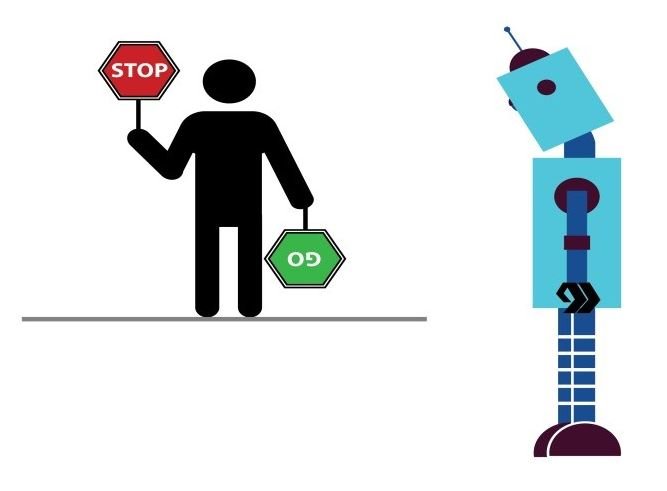What’s enabling and hindering artificial intelligence?
The science of making machines ‘smart’ (referred to as artificial intelligence (AI)) involves giving machines qualities such as learning and the manipulation of objects. As we’ll see in subsequent articles in this series, the pace of change in AI is already having an impact on the world of work; changing our jobs and the skills we will need for work in the future.
Here, Helen Beers of the Health and Safety Executive’s Foresight Centre considers what might influence the pace of change, what is driving the trends in AI, and what is likely to get in the way.

 The potential of, and need for, machine learning has partly been increased (driven) by the unmanageable volume and complexity of big data. According to calculations by Gartner, most of the world’s information is now in unstructured formats such as e-mails, images etc., with the overall volume of information set to grow by 800% over the next five years.
The potential of, and need for, machine learning has partly been increased (driven) by the unmanageable volume and complexity of big data. According to calculations by Gartner, most of the world’s information is now in unstructured formats such as e-mails, images etc., with the overall volume of information set to grow by 800% over the next five years.
So how might organisations use AI to manage (or mine) big data? One example would be a bank using machine learning to make better financial recommendations based on comprehensive analysis of market conditions, clients’ past decisions, recent events and available offerings (i.e. a large volume of complex data). Another example might be the use of AI in fraud detection and security (to integrate large volumes of both structured and unstructured data).
As the analogue world becomes increasingly digitalised, humans’ ability to learn from data by developing and testing algorithms (or mathematical recipes) will become more important. Indeed, advances in digitalisation have been a key enabler of the increasing trend in machine learning.
People and businesses are generally becoming more comfortable with using technology. In addition, technology can provide competitive advantage for businesses. One way that AI can do this is by providing customer intelligence (understanding what customers are interested in by obtaining feedback from them).
An illustration of this is an experimental marketing poster (incorporating AI) which ‘writes itself’; based on what works rather than just what a person thinks may work. How is this done? Well, apparently the poster senses the presence of passers-by before displaying an advertisement, and then learns how relevant it is from their individual reactions. Body-tracking technology works out when people are standing near, a combination of pictures and advertising copy are displayed, and the audiences’ reactions are assessed to determine what they find most attractive.
An algorithm then picks the most successful combinations and eliminates the others. This is an example of what might be referred to as a ‘know your customer system’, where AI is used to manage unstructured and constantly changing data.
Perceptions about the benefits of AI (for example whether it helps with making more effective business decisions) will influence whether the increasing trend continues. Indeed, some commentators are suggesting that organisations must now embrace AI or risk being left behind.
Of course, we should also mention that the cost of computing power has become increasingly cheaper, and becoming more affordable enables uptake by a larger number of users.
One factor that may hinder the uptake of machine learning is moral public opinion.
In particular, ethical issues around replacing professionals with artificial intelligent expert systems. People want to feel they are being listened to by another human being, and whilst it’s OK for advice to be generated by a machine, people want to actually hear it from another person and be able to discuss it.
Much has been written about AI replacing professionals, and the extent to which AI might replace professionals (as well as other jobs) is the subject of our next article in this series.
©Crown Copyright 2016, Health and Safety Executive
What’s enabling and hindering artificial intelligence?
The science of making machines ‘smart’ (referred to as artificial intelligence (AI)) involves giving machines qualities such as learning and
Helen Beers
SHP - Health and Safety News, Legislation, PPE, CPD and Resources Related Topics
Higher demand but not able to meet it – a survey finds health and safety provision lacking for staff
Housing company fined more than £500k after worker suffers burns
Company fined as worker has leg amputated

How topical! Especially with regard to Helen’s point on moral public opinion – see concerns on privacy on Admiral’s Facebook mining to assess insurance risk:
http://www.telegraph.co.uk/insurance/car/insurer-trawls-your-facebook-profile-to-see-how-well-you-drive/
Robot safety rocks!
In addition to your examples in banking and marketing Helen, please can you give some health and safety related examples in a future article? Thanks